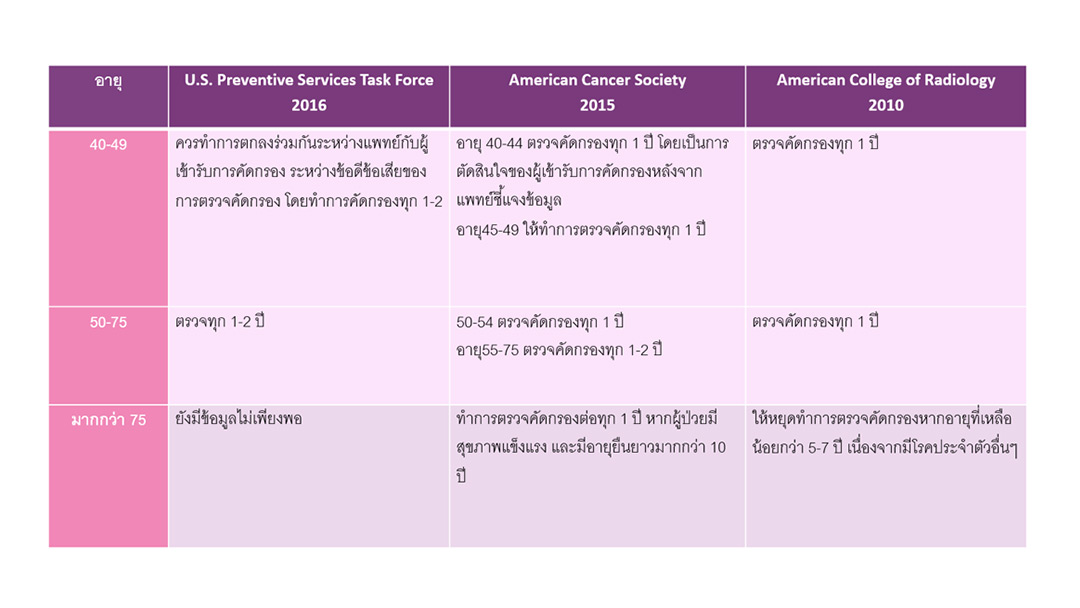Breast Cancer: The earlier you’re aware of it, the higher chances of getting cured. Let us see the most appropriate screening methods.
By Assoc. Prof. Dr. Youwanush Kongdan
Breast Cancer Screening
Prognosis varies by the stages of cancer and has a huge impact on survival or recovery from breast cancer. Detecting beforehand enable us to diagnose at an early stage or find abnormalities before turning into breast cancer. Breast cancer screening consists of:
1. Breast Self-exam
Breast Self-examination should be done regularly. The most suitable period is 3 – 10 days after the first day your menstruation. Here are the guidelines for Breast Self-examination (BSE):
Make an appointment with a doctor as soon as you notice the following abnormalities:
- Feeling a lump in the breast or armpits
- Blood or other secretions from the nipple
- Nipple pointing in an unusual direction
- Either sores or lesions on the skin or nipple
- Dented, dimpling, puckering or pulling of the skin
- Unequal breast size
- Changes in the way your breasts look or feel, including thickening or prominent fullness that is different from the surrounding tissue
- Breast appear to be swollen like a pomelo skin etc.
2. Clinical breast examination
A clinical breast examination is essential. Many patients may have a misconception where breast cancer screening is completed with mammogram and ultrasound screenings. Thus, a physician’s assessment is a quintessential clinical procedure for an effective diagnosis because screening with mammogram and ultrasound may cover only 85-90%. The physician will further examine to confirm if other abnormalities such as bleeding or lesions of the nipple that are undetectable on mammogram and ultrasound are present.
3. Mammogram & Ultrasound Screenings
Mammogram & Ultrasound Screenings are standard procedures for an effective breast cancer screening enabling us to detect before any visible symptoms occur in the early stage, therefore, heightening the chances of completely curing breast cancer after treatment. As of now, there is no studies or supporting data in Thailand to specify an age to start undergoing breast screening in Thai women. However, according to Thai Breast Cancer Study Group, Thais are at risk of getting breast cancer at an average age of 40 years old, which is ten years younger than the westerners as theirs start at 50 years old. Moreover, Thai women have a much denser breast in comparison to the westerners and ultrasound screenings plays a vital role detecting breast cancer in dense breast which is why Thai women are recommended to follow the screening guidelines as follows:
Breast self-examination should be done at least once a month, 3-10 days after the first day of your menstruation. Try to get in the habit of doing a breast self-examination starting at an earliest stage of period.
Age 20-40 may see a doctor for clinical breast examination every 2-3 years.
Mammogram and ultrasound screening every 1-2 years from the age of 40-75 years. However, if one wishes to skip and screen once every 2 years, ultrasound screening alone shall be adequate as well.
Here at Namarak Hospital, we dedicated breast cancer screening by 4 machines which are:
Digital 3D mammogram
High resolution ultrasound
3D Automatic ultrasound prone 360 degree scan
3D Automatic ultrasound supine horizontal scan









